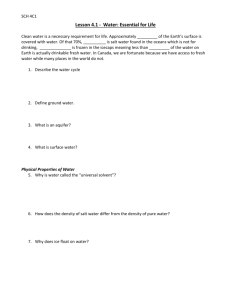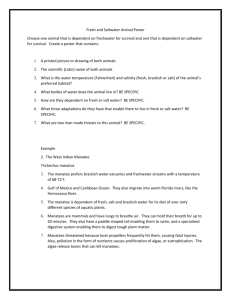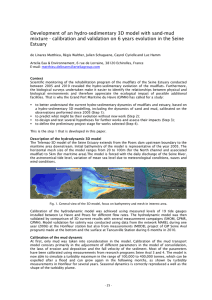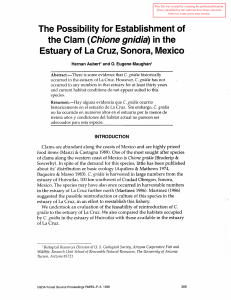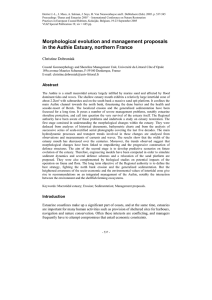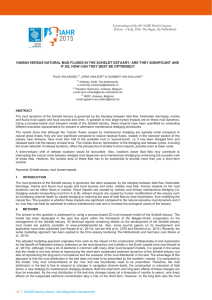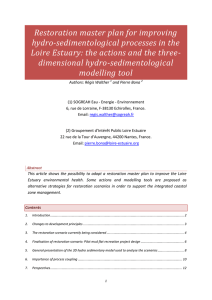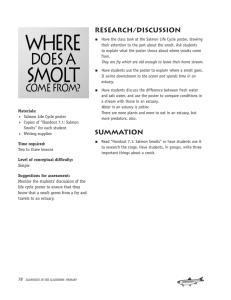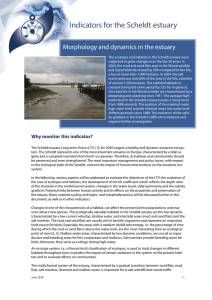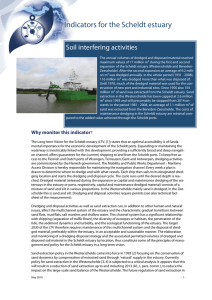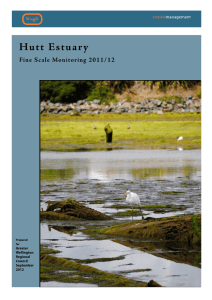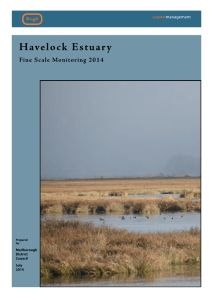Estuary Biomes By: Sarah Stark and Emily McMaster
advertisement
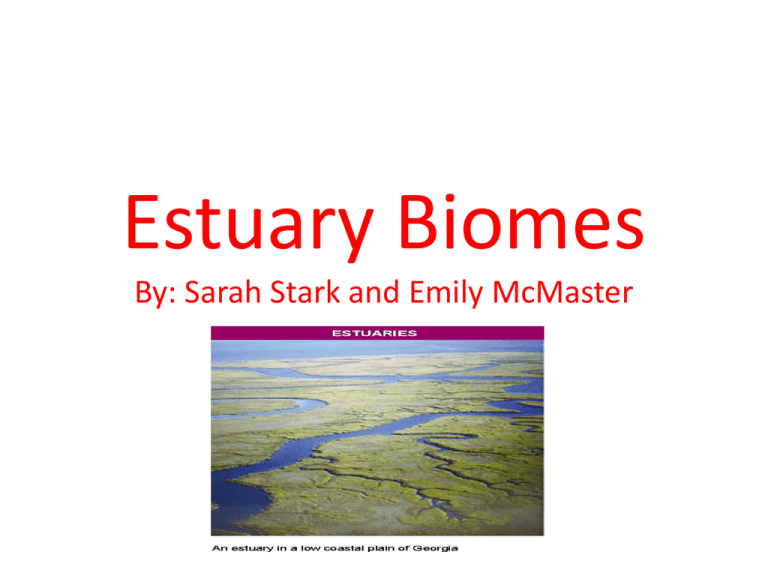
Estuary Biomes By: Sarah Stark and Emily McMaster Estuary Biomes • Estuary: the part of the wide lower course of a river where its current is met by the tides. Geography and Climate • Location: Where sea water and fresh water meet. • Examples: Bays and lagoons • Mixed Water: Brackish (fresh water and salt water) Geography and Climate • Description: A partially enclosed body of water where sea water mixes with fresh water • Soil Type: sediments, sand, mud, very rich, has bacteria. • Precipitation: has a dry season and an average precipitation. It also depends on the location. • Temperature Range: almost always warm. It also depends on the location. • Climate: always wet and almost always warm. It also depends on the location. Biodiversity • Plant Species: corgrass, spike grass, purple loostrife, and sea lavender are the most common plants in an Estuary Biome. • Animal Species: mud shrimp, ghost shrimp, blue crabs, starry flounder, tarpon, barracuda, tiger sharks, bull sharks, sand pipers, yellow legs, bald eagles, fish eagles, sea eagles, crocodiles, beluga whales, dolphins, musk rats, beavers, and otters are some of the many animals in an Estuary Biome. Adaptations • Plants: deep roots, some have filters on roots, live in salt water and in fresh water, respond quickly to changes, and some have matted roots. • Animals: respond quickly to changes, and live in salt water and fresh water. Interactions • Biotic (living): larger animals feed on smaller animals and some plants. • Abiotic (nonliving): drinking water for animals, sand and mud help plants filter out salt water and is a habitat for shell fish. The sand and mud also is playground, mating ground, and a nursering ground. Video • Estuaries Biome - Ecogeeks : Untamed Science Video Podcast - CastRoller Resources • http://castroller.com/Podcasts/EcogeeksUnta med/1903621 • http://dictionary.reference.com/browse/estua ry?s=t • http://www.mbgnet.net/salt/sandy/indexfr.ht m



